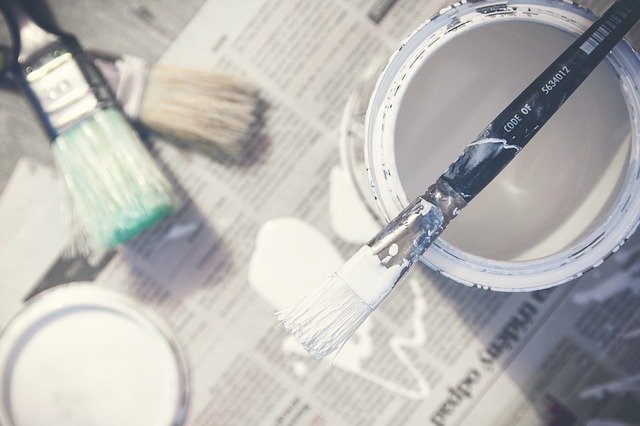If you are planning to paint the interior of your home on your own, you should know some techniques that can help you achieve satisfactory results. Also, you should use the right tools and equipment to get done with the painting like a pro. There are so many other important aspects that you should consider before you start painting the interior.

Here are 5 well-known tips mentioned to help you in DIY interior painting.
- Visual Inspection
First of all, you should do a thorough inspection to see if there are any cracks or gaps in the wall. If you find any one of them, you need to fill them up with sand first. You should also rinse the wall properly before applying any primer or paint on it. It will help you give a more neatly finished look at the end of the day. Also, it will save both your time and money from being wasted.
- Primer
The primer you use must help you hide the imperfections. It should make the layer of the painting look even. So, when you are choosing the primer, make sure you buy the right one according to the type of house paint you are going to do. For instance, if you are painting new drywall, a water-based primer would be the best choice. But if you are painting paneling or water-damaged walls, you should go for an oil-based primer.
- Roller
The roller would help you add the texture to the interior walls of your home. So, you should choose a roller with a longer nap that can hold more paint. The fabric that covers the roller plays a huge role in creating the texture because of its fibers that distribute the paint. But if you want to create a smoother look without adding any texture, you should better use a shorter roller.
- Cover or Remove Everything
You should cover everything that you don’t want to get painted in the process. So, take some time out to cover the floor, furniture, hardware, and other valuable accessories in the surrounding. You can use plastic bags by securing them with tape to protect the doorknobs. Moreover, remove outlet covers and light switches to avoid any disaster later. These five minutes you invest in covering and removing things before you start painting can save you from a lot of significant losses.
- Drying Out
You must prevent the paint and brushes from drying out at any cost. You can add golf balls in the paint can or place the plastic cover under the lid. You must seal tight your paint properly if you want to keep it fresh and smooth until you finish your painting project. Similarly, you can wrap your brushes and rollers in the plastic bags and put them in the refrigerator to ensure that they don’t dry out quickly. Also, when you use them the next day, you should get them warmed up back first.